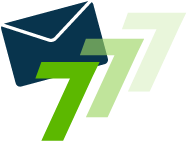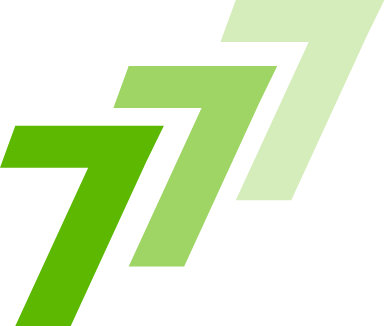How do you create content that answers buyers' real questions? Here's how to run a content workshop using a process based on They Ask You Answer.
Writing a blog that keeps the reader in mind, instead of writing for search engines, is writing to be read.
The key issue for readers with using copywriters or AI is this – if you can’t be bothered to write this, why should I read it?
Here are seventeen tips for you to write blog posts efficiently and effectively, inspired by best practices from Marcus Sheridan’s “They Ask, You Answer” and HubSpot’s inbound model.
TL;DR: 17 Blogging Tips
- Plan: Create a content plan to ensure your blog posts are purposeful and focused, maximizing your time and effort.
- Group: Organize your content into groups based on different buyer journey stages to ensure it resonates with the right audience.
- Purpose: Create content that answers your audience's questions with clear, factual, and well-structured information that aligns with SEO best practices.
- Question: Identify a key question your audience cares about and ensure your blog answers it thoroughly throughout the content.
- SEO: Focus on SEO by targeting low-competition keywords, optimizing on-page elements, and using schema markup for better search engine visibility.
- Audience: Tailor your content to specific buyer personas to make it more relevant and engaging for your target audience.
- Length: Write clearly and conclusively, focusing on helpfulness, and use summaries and navigation tools for longer posts.
- Formatting: Break up your content with headings, bullet points, images, and other formatting tools to improve readability and engagement.
- CTA: Include one clear and contextually relevant call to action to guide your readers toward the next step.
- Outline: Create a blog outline with key sections like title, introduction, body, conclusion, and CTA to maintain structure and focus.
- Titles: Craft short, attention-grabbing titles that include your target keyword and are easy to read in search results.
- Images: Use relevant images to break up text, improve SEO, and provide a compelling visual experience for readers.
- Linking: Use both internal and external links to enhance SEO, guide readers to related content, and establish credibility.
- URL: Keep your blog’s URL short, focused on the main keyword, and easy for search engines and readers to understand.
- Publishing: Review and publish your content consistently, aiming for a regular publishing schedule to build audience expectations.
- Distribution: Share your content across multiple channels, such as your website, email, social media, and more, to reach a wider audience.
- Optimizing: Periodically update your content to keep it fresh and create derivative content like infographics and videos to extend its reach.
Plan
The first step is to create a content plan. Blogging without a plan is a plan to fail.
Use your content plan to help you make the most out of your time and translate your brainstorming into creating content that is going to help readers.
Group
A grouping acts as a filter for the content you can produce based on the different stages of the buying experience. Write groups appropriate to the stage:
- Educational: Content will help the reader to articulate their challenges and overcome them
- Products: Content will help the reader to appreciate what you offer and the benefit to them
- Use cases: Content will help the reader to appreciate what they can do using your software
- About us: Content will help the reader to appreciate who you are
- Pre-Discovery: Content will help the reader to prepare to get the most out of a discovery call
- Discovery: Content will be used to fact gather during the discovery
- Post-Discovery: Content will set expectations and guide the next steps
- Post-Purchase Survey: Content will help the reader to share feedback on your support
Purpose
You now must think about the purpose of the content. Not all content is created equally, and it follows that not all content is of the same value.
Only create content for your audience. If you create content to game search engines, you’ll fall foul of algorithms. What withstands all algorithm changes is:
- Content that answers questions
- Content that is supported by facts and data
- Content that uses images, headings, and simple sentences to distill complex info
- Content that internally links to your related content
- Content that externally links to high-quality websites
- Content that has links pointing towards it (as in link building)
Question
You need to choose a topic that your audience will care about.
From your content plan, this will be referred to as your question, as all content should solve a question.
The question must be referred to (and answered) in the introduction of your blog, sprinkled throughout each section of the blog, and then recapped in the conclusion and call to action.
These are questions like:
- How can this fail?
- Who should attend a discovery call?
- How much does this cost?
- How soon can you get started?
- What’s the difference between your company and a competitor?
Your blog should naturally answer this question and any other related questions. To discover associated questions, you can brainstorm related ones that you have heard and/or look at using tools like Ubersuggest to find related questions.
Tools like Ubersuggest ensure you cover enough breadth of questions within the blog, as these are generated from what people search for.
SEO
Just because you’re writing for your audience doesn’t mean you should ignore SEO, as the previous point suggested via Ubersuggest.
Typically, you will find traction with driving traffic if you align your audience’s question(s) to low-hanging fruit.
Low-hanging fruit is typically a keyword associated with a low volume. If there is low volume, it will likely mean there is low competition.
You’ll see some tools refer to this as “keyword difficulty.” Anything below 30 is low-hanging fruit.
After writing your content to answer the question, you should ensure that any related keywords are naturally used throughout the copy.
Avoid stuffing high volumes of a keyword into the post. Instead, think of using synonyms and applying the keyword to the alt text for images.
Additionally, you need to apply schema markup (the language that search engines look towards to understand the structure of your blog) and follow best practices for on-page SEO.
Audience
When you start writing, think about who you’re writing for. Rarely will your content be valuable to everyone involved in purchasing your software.
Buyer personas dictate your audience within your ideal customer profile. That typically looks like this:
- Researcher: The person who has been tasked with finding a solution
- Decision maker: The person who ultimately looks after the area of the business your software supports
- Budget holder: This could be the decision maker but may also be someone in finance.
- Champion: The person who has experience in your software or methodology or has used a competitor and sees the benefits.
- Nay-sayer: The person who doesn’t think this is needed or worth the money or time.
These personas have different angles for you to consider as you write content. Keep them in mind and let your tone of content lean towards their POVs.
Don’t be afraid to write content and, within the blog, personalize sections to address these people head-on.
Length
The length of your content is ultimately dictated by the type of blog post you are creating. But the rule of thumb is that less is more.
Your audience and search engines don’t care for a particular content length. Therefore, think about writing with clarity, preciseness, and helpfulness in mind.
If your content is long, have a section at the beginning as a summary. In that summary, concisely answer the question and offer more information below.
Likewise, look to introduce a menu to the left of the blog which helps people jump to the section they care about, like below:

This is a great way to improve your audience’s reading experience. Other ways to help include a progress bar at the top of the page, offering a save function or downloadable version, an audio version, and a time to read the content.
In terms of how to frame your content, these are the common types to consider:
Some examples of blog types are:
- The Pillar Page Post (“Ultimate Guide”): Long-form content providing an in-depth guide to a topic
- The “How-To” Post: A dummies’ explanation of completing a process
- The “What Is” Post: A basic explanation of a concept challenge or solution
- The List-Based Post: A process or list that goes through options for overcoming a challenge
- The Infographic Post: A visualization of content, typically an explainer or comparison
- The Newsjacking Post: Content that is created to capitalize on some recent high-trending news.
Formatting
An often overlooked part of content is the use of formatting. Breaking your blog into more digestible chunks goes a long way in keeping your audience engaged and motivated to convert.
Here are the different areas of your blog’s formatting that you need to pay attention to:
- Use headings
- Keep paragraph lengths to 3-4 lines.
- Use bullets (avoid numbering bullets unless they indicate importance or steps)
- Use images (only if they add value; don’t use them for the sake of using them)
- Use alt text and captions to describe the image (important for accessibility issues)
- Use bold, italics, and underlining to indicate essential parts of the copy
- Use anchor links (see above with the menu example given)
- Use progress bars
- Use audio versions as an alternative
- Provide links to related content
- Use pull quotes to make quotes stand out in your content
- Always hyperlink to your sources if you quote
- Format your blog to have a CTA to the right of the content – this could be for a newsletter or a high-value piece of content.
CTA
Your blog needs to have a next step – known as a call to action (CTA). This must be contextually appropriate, meaning this sort of flow:
- A blog that explains what a methodology is, your CTA should be related content on how to do this yourself
- Your blog explains how to do this yourself, then your CTA should be related content on what you need to execute the methodology
- Your blog explains how to execute the methodology, then your related content needs to be about your options for support
- Your blog and the options for support should then have a CTA to view your product and use case pages or book discovery to learn how you can help the reader.
You should only ever have one CTA. The more options you give, the more apathy will come.
Outline
Now that you have a clear idea of why you’re creating the content, who it’s for, and the main action you want from the audience, it’s time to outline the blog.
What your outline contains is dependent on the above, but typically you will have:
- Title
- Meta description (the short, 50–150-character description of the blog added to the back end of the blog)
- Date of publishing (and date of update when appropriate)
- 50–100-word introduction
- Too Long; Didn’t Read / summary section giving away the answer to the blog
- The beginning of the story (what this is / what the challenge is)
- Reinforce the value (why it matters)
- Explain how to do this thing or overcome this challenge
- Reminders on what to be wary of
- Close
- CTA
Titles
A blog title is hard to create. While you don’t want to be spammy like Buzzfeed, the title must grab attention and include your target keyword.
Brainstorm 4-5 versions of your blog title and land on the short one and to the point. Avoid creating long titles because these will be hard to view on search engine results pages, where your audience will mainly discover the content.
You can use HubSpot’s blog title generator here for extra help.
Images
Images are crucial to breaking up the content in the body of your blog, but they’re also vital for SEO purposes.
A meta-image must be attached to the back end of your blog builder. This image will be used as the image that appears when you share your posts on LinkedIn, within Teams, and other platforms.
You can preview the meta-image and description using this tool – Meta Tags
Linking
Continuing SEO best practices, you must use internal links to your content to demonstrate to search engines how this content factors into the broader content on your site.
Links to external content will also help your audience to know that there are other sources to learn the answers to their questions – and position you as being mature and capable of educating for education purposes, not purely commercial.
URL
The URL that you use matters. Keep it short and revolving around the keyword you’re focusing on.
Publishing
Once the content is written, review it after 24 hours (ask for another pair of eyes to look it through), and then prepare to publish the content.
The cadence at which you do this is dependent on your goals. For us, that means publishing one piece of content a month. Your audience (and Google) really cares about consistency. Don’t let them down once an expectation is set.
Distribution
As the content is published, you must find appropriate channels to share it. Do so with this priority:
- Website
- Email update
- Nurture email sequences
- Customer engagements
- Newsletter
- Podcast/webinar references
- X
Beyond this, look to link building to help you generate traffic to the content outside of your network. People will be willing to link to your content if it follows the steps in this guide.
Optimizing
Content needs to be fresh. Some of the lowest-hanging fruit is updating existing content—schedule time to review, optimize, and supplement your content 6 months after publishing.
It is in this review process that you’ll find opportunities to create derivatives. These will often be infographics, YouTube short videos, and even podcasts.
Get To Writing Your Blog
Creating blog content comes down to writing for your audience in a way that helps them when they need it. There is a great deal of content out in the ether, which GenAI accelerates.
By creating content for your audience, you choose a path that withstands macro-level change. Be consistent, follow this tip sheet, and always remember – if a question is asked, it’s worth answering with content.
Ready to create your content? Download this template to generate ideas.

James Milsom
When I'm not spending time quoting What We Do In The Shadows, The Office, or Parks and Rec, I'm watching the Georgia Bulldogs (Go Dawgs!), walking our dog Crosby with my wife, McKenzie, or geeking out on tech. I find time to eat, sleep, and work out too (honest!)







